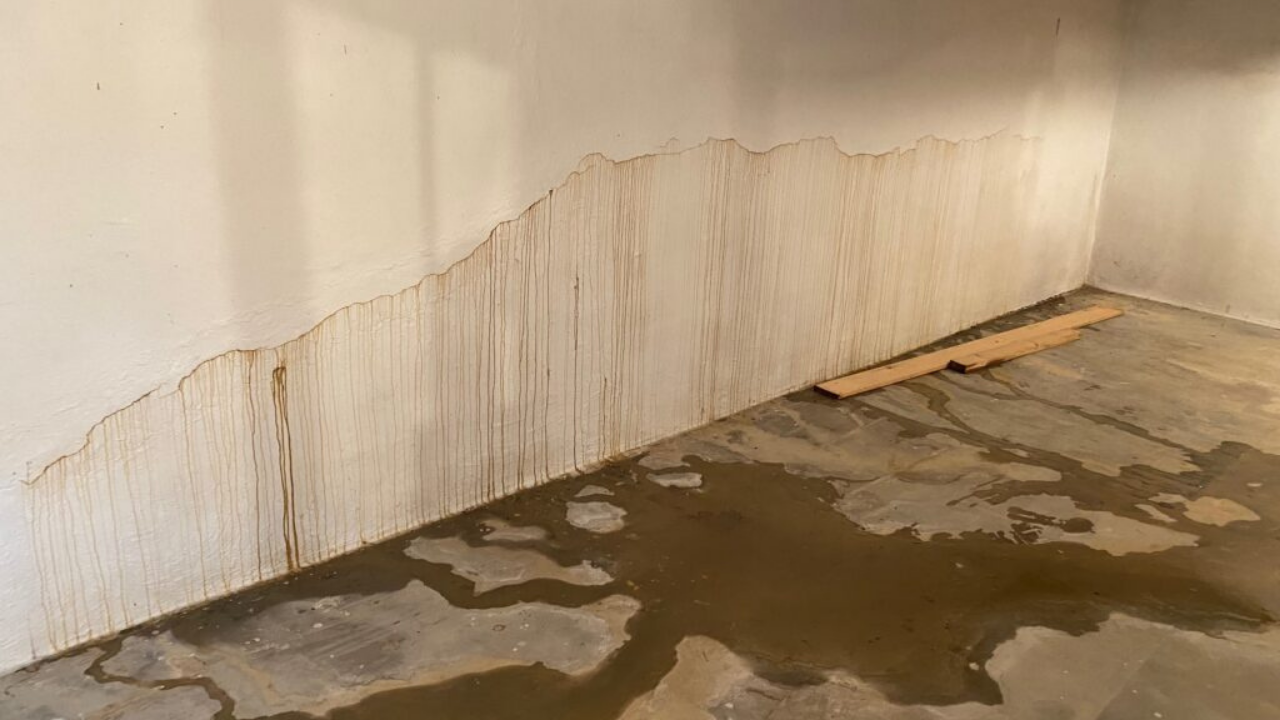
Basements, forming the foundation of buildings, are in direct contact with the ground and therefore are the areas most exposed to water. Groundwater pressure, moisture rising from the soil, rainwater infiltration, and seasonal water accumulation can all lead to serious waterproofing issues. These problems often result in dampness, mould, unpleasant odours, and even structural deterioration due to freeze-thaw cycles. For this reason, effective basement waterproofing is essential to ensure the longevity and structural integrity of any building.
But how is basement waterproofing done? What materials should be used? And what are the key things to look out for during application? Let’s take a closer look at all these questions in detail.
Common Sources of Water Ingress in Basements
Before starting any waterproofing work, it’s crucial to identify the root cause of the
1. Ne If the water
2. Rainwater penetrating exterior walls: Inadequate external waterproofing can allow water to seep through the retaining (perimeter) walls in contact with soil.
3. Capillary rise: Water moves upwards through tiny pores in the concrete, a phenomenon known as capillary action.
4. Plumbing leaks: Leaks from drainage pipes or waste lines can also be a source of persistent moisture problems.
Understanding the exact cause helps determine the right materials and the correct application method—both of which are essential for a successful waterproofing solution.
Waterproofing Methods Used in Basements
Basement waterproofing can be carried out from either the outside (positive-side waterproofing) or inside (negative-side waterproofing). However, since external access is often not feasible in existing buildings, internal waterproofing is more commonly applied.
1. External Waterproofing (Positive-Side Method)
If the building is under construction or if excavation around the foundation is possible, external waterproofing provides the most effective and long-term solution. This method involves:
- Applying a primer, followed by a liquid membrane and a protective sheet to the foundation base and retaining walls before concrete is poured.
- Using polymer-modified bituminous membranes or liquid-applied bitumen coatings.
- Installing a proper drainage system to divert groundwater away from the structure.
Advantage: Stops water before it ever reaches the structure.
Disadvantage: Not feasible for most existing buildings.
2. Internal Waterproofing (Negative-Side Method)
This is the most commonly used method for existing buildings. The aim is to block water that has already entered the structure and prevent it from reaching the interior surfaces.
Crystalline Waterproofing Compounds
- Applied to the surface, these compounds react with moisture and free lime in concrete to form insoluble crystals.
- These crystals fill the pores and capillaries in the concrete, effectively blocking water ingress.
- Extremely effective against negative hydrostatic pressure.
Polyurethane-Based Liquid Membranes
- Highly flexible and capable of bridging cracks.
- Provide strong resistance against inward water pressure.
- Should always be applied with a primer and on a dry surface.
Cementitious Flexible Coatings
- Two-component systems (cementitious base + liquid polymer).
- Applied with a brush or trowel on slightly damp surfaces.
- Offer excellent adhesion and long-lasting waterproofing.
Polyurethane Injection Systems
- Used for active leaks or pressurised water infiltration.
- Involves injecting PU or epoxy resin into the exact point of leakage, sealing it from within.
Step-by-Step Guide to Internal Basement Waterproofing
Here’s a typical workflow for waterproofing an existing basement from the inside:
1. Surface Preparation
- Remove all loose plaster, coatings, and deteriorated concrete.
- Identify and seal any active leaks using polyurethane injection.
- Clean the entire surface of dust, grease, form-release agents, and paint residues.
- Apply repair mortar to joints and corners to form coved edges.
2. Primer Application
- Apply a compatible primer to enhance adhesion to concrete.
- If using a crystalline product, some systems may not require a primer.
3. Waterproofing Layers
- Apply the first layer of waterproofing (e.g., crystalline slurry or flexible cementitious coating).
- Apply the second layer perpendicular to the first (horizontal + vertical direction).
- Allow at least 6–8 hours between coats, depending on the product.
4. Protective Layer and Final Finish
- Once fully cured, protect the waterproofing with a screed, plaster, or protective board.
- Final finishes such as tiles or paint can be applied as needed.
Which Products Should Be Used and When?
| Situation | Recommended System | Why? |
|---|---|---|
| External access possible | Bitumen-polymer liquid membrane or rolls | Prevents water from reaching the structure |
| Negative pressure from groundwater | Crystalline slurry + PU injection | Blocks water from within the concrete |
| Slightly damp substrate | Cementitious 2K flexible coating | Easier application and strong adhesion |
| Elasticity required | Polyurethane-based liquid membrane | Ideal for crack-bridging and flexibility |
Common Mistakes in Basement Waterproofing
- Using only paint: Decorative paints are not waterproofing systems.
- Inadequate surface preparation: Poor adhesion occurs on dirty or weak surfaces.
- Incorrect product choice: Not all waterproofing materials are suited for all problems.
- Single coat application: Most systems require two or more coats for full effectiveness.
- Ignoring curing times: Premature recoating or finishing reduces durability.
Professional Basement Waterproofing with Dryfix
At Dryfix, we offer a full range of advanced waterproofing solutions tailored for basement applications:
- Crystallize: State-of-the-art crystalline technology for negative-side waterproofing.
- DF PUR INJECTION 2K: High-performance polyurethane injection system for active leaks.
- Water Block: A flexible, highly elastic PU-based waterproof coating ideal for internal surfaces.
- Full Flex 2K UV: UV-resistant, elastic membrane suitable for both positive and negative pressures.
With Dryfix products, you can eliminate mould, odour, blistering paint, and dampness from your basement—permanently.
Basement waterproofing is not a luxury; it’s a necessity. With the right diagnosis, material selection, and application method, you can significantly extend the life of your building and create a dry, healthy living environment.
If you’re looking for expert support in your waterproofing project, the Dryfix technical team is here to guide you every step of the way.
